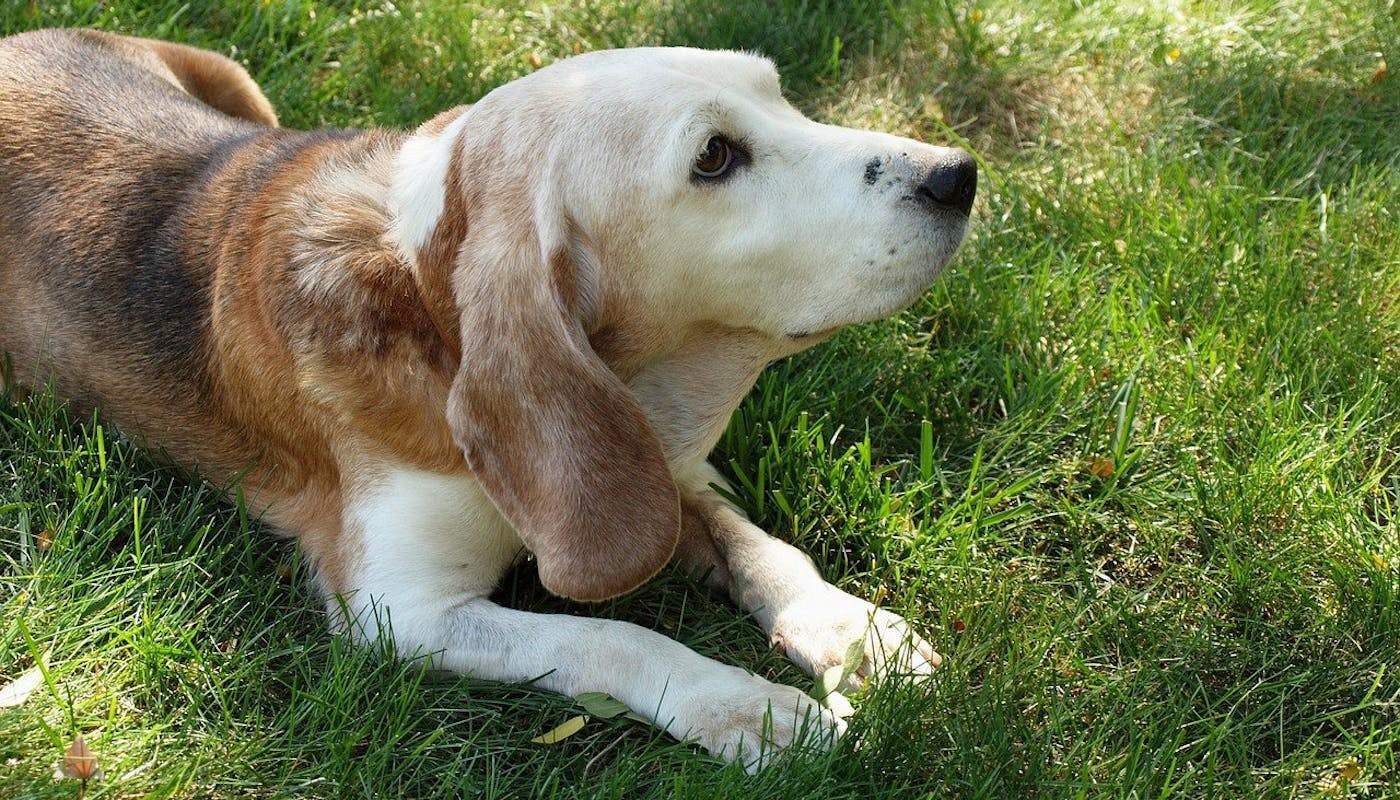Cushing's Disease In Dogs: The Symptoms
As our pets get older, we begin to notice changes to their appearance, their habits, and sometimes their bodily functions. So, if your dog has been drinking and urinating more than usual it might be more than just a sign of old age: it could be symptoms of Cushing’s Disease.
Whether your dog has been diagnosed with Cushing’s Disease, you suspect they might be showing signs of the condition, or your pet is just getting older and you want to know the Cushing’s symptoms in dogs to be aware of, we’ve got you covered.
What Is Cushing’s Disease In Dogs?
Cushing’s Disease is caused by a tumor in the pituitary gland or adrenal glands that causes the release of excessive amounts of the ‘fight or flight’ stress hormone, cortisol. The pituitary gland is located at the base of the brain, and releases adrenocorticotropic hormones (ACTH) that direct the adrenal glands, located near the kidneys, to release cortisol.
Also known as hyperadrenocorticism, the condition is fairly common in both humans, dogs, and cats. The excess cortisol being released is what leads to the most common symptoms of Cushing’s Disease.
Symptoms Of Cushing’s Disease In Dogs
It can take up to a year for the symptoms of Cushing’s Disease to fully develop. So, by the time many owners have spotted the signs, the disease has already advanced. However, some of the most common symptoms to look out for include:
- Excessive thirst
- Excessive panting
- Increased urination, especially at night
- Increased appetite
- Muscle loss
- Weakness
- Reduced activity
- Thinning skin
- Lesions on the skin
- Skin infections
- Hair loss
- Pot-bellied appearance
- Weight gain and obesity
What Causes Cushing’s Disease In Dogs?
Generally, Cushing’s Disease occurs naturally as a result of a tumor forming on the pituitary gland or adrenal glands, causing the release of excess cortisol. However, prolonged exposure to excessive amounts of prednisone (which is often used to calm down an overly aggressive immune system or reduce inflammation) or dexamethasone (which is used to treat a wide range of conditions from skin complaints to respiratory illnesses and autoimmune conditions) can also cause the condition to develop.
Some ear drops containing steroids which are absorbed through the skin can also cause Cushing’s Disease. But since this isn’t a result of a tumor, symptoms caused by these forms of the condition should stop once the medication stops being administered.
How To Diagnose Cushing’s Disease In Dogs
Cushing’s Disease can be difficult to diagnose. So owners of dog breeds that are more prone to the condition should be extra aware of the symptoms. These breeds include:
- Beagles
- Boston Terriers
- Boxers
- Dachshunds
- Poodles
If you suspect your dog has developed Cushing’s Disease, you should take them to the vet for an official diagnosis. Verifying the symptoms will usually be confirmed by:
- Ultrasounds to check for tumors
- Blood and urine tests to check the liver enzymes in their system
- ACTH stimulation tests to check cortisol levels
- Dexamethasone suppression tests to check cortisol levels
Treating Cushing’s Disease In Dogs
Pituitary glands can be removed in humans, but the procedure isn’t as easy in dogs. And since over 90% of dogs with Cushing’s Disease have developed a tumor on the pituitary gland, the most common treatment for the condition is medications that selectively destroy part of the adrenal cortex.
It’s not as scary as it sounds – the tiny tumors that form on the pituitary gland are usually benign and mean that the gland continues to release ACTH. So by preventing the adrenal cortex from releasing as much cortisol, it allows levels to remain balanced.
If a dog has developed a tumor on their adrenal glands, it’s harder to treat and may require surgery. It’s complicated and might not cure the disease, especially if the tumor is malignant as they grow and metastasize quickly.
What Is The Life Expectancy Of A Dog With Cushing’s Disease?
After treatment, the main symptoms – like excessive thirst and urinating – should begin to stop within as little as one week. The skin issues can take a little longer to resolve and might not be cured for a few months.
Though Cushing’s Disease isn’t thought to cause death, it’s most common in senior dogs. For this reason, only 10% of dogs diagnosed with Cushing’s Disease live a further four years with most only surviving an average two years after diagnosis. However, this is mostly due to aging and other causes unrelated to this Disease.
